Strategic Plan
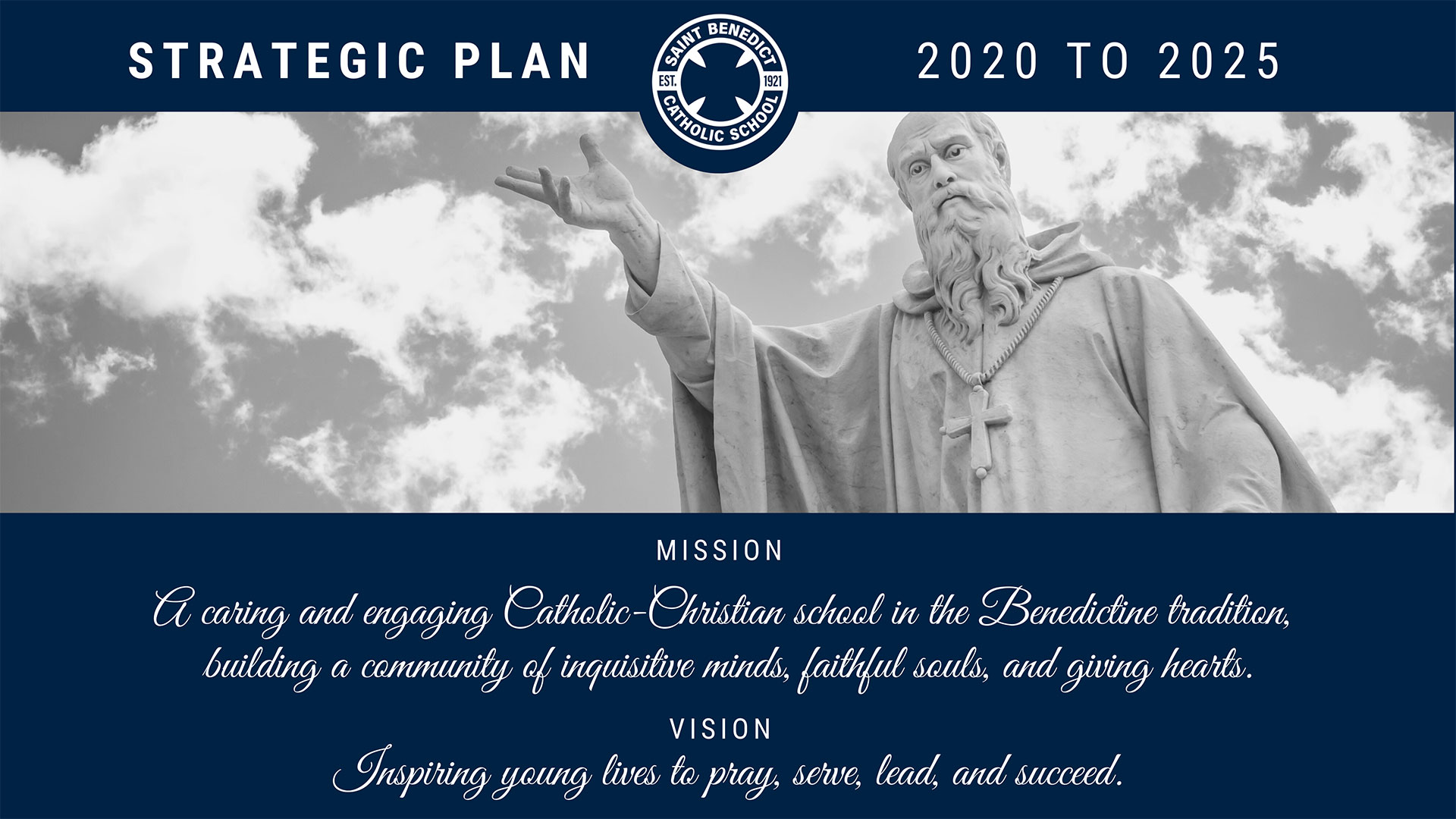
16 Goals; 100 Objectives
SBCS will reinvigorate our existing sense of Catholicity and seek out constant newness in our faith.
Goal 1
Cultivate the faith of students to be more active, explicit, and intrinsically motivated.
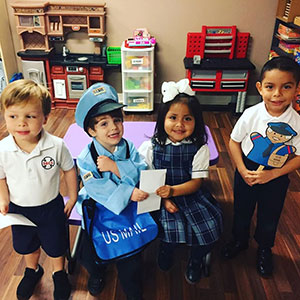 1.1. Provide an annual, well-planned retreat for middle school students, partnering with NET, local area young ministry leaders, a Catholic college campus ministry, or FOCUS.
1.1. Provide an annual, well-planned retreat for middle school students, partnering with NET, local area young ministry leaders, a Catholic college campus ministry, or FOCUS.
1.2. Develop a weekly bible study program (student facilitated and led) with a focus on prayer and scripture reading for middle school students.
1.3. Develop (or adopt) a moral development/formation plan (standards and benchmarks) for SBCS students. This will go beyond the religion textbooks to ensure that a strong moral foundation is instilled that will carry them throughout life.
1.4. Conduct a high school night at St. Benedict on a semi-annual basis where a St. Michael student speaks to students and parents about the impact Catholic education has had on them.
Goal 2
Strengthen relationships with the regional church communities that support St. Benedict.
2.1. Begin a public relations/marketing campaign based on baptisms in the area parishes. Following each baptism and annually for the next few years, the family will receive a note from SBCS. On the fourth anniversary, invite the family to visit the school. On the sixth anniversary, follow-up once more as the child nears first communion.
2.2. Invite parishioners to attend a SBCS Mass when their pastor is presiding. Encourage them to stay for a tour with student ambassadors from their parish and a visit with the principal.
2.3. Conduct semi-annual presentations regarding the impact of a Catholic education at parish Masses, rotating alumni, parents, students (of that parish in uniform), and principal.
2.4. Promote parish events to parents, students, and alumni through newsletter and social media.
Goal 3
Attract qualified teachers, improve morale, and support professional growth and development.
 3.1. Increase salaries to meet or exceed Archdiocesan recommendations.
3.2. Develop dynamic, professional, and positive teacher job descriptions. Advertise open positions in Baldwin and Mobile County parishes.
3.3. Network with local colleges and universities to recruit student-teachers and recent graduates.
3.4. Explore the feasibility of a reciprocal tuition benefit with St. Michael Catholic High School.
3.5. Identify affordable pathways to enhance teacher training through professional development and advanced degrees. Offer pay increases for advanced degrees and stipends for attending professional development workshops.
3.6. Encourage teachers to develop personal professional development goals at the beginning of the year in collaboration with the principal. Review as part of each teacher’s annual evaluation. In addition, the faculty will collaboratively select school-wide professional development goal(s) each year to support school-wide improvements.
3.7. Provide mentors for teachers with 1-3 years of teaching experience. Identify teacher mentors from within the school faculty or in the community.
3.8. Ensure that teachers continue to have necessary resources for their classrooms including technology, textbooks, and supplies. Develop teacher “wish lists” and advertise to parishes and alumni. Consider fundraising activities for teachers’ classroom needs such as grants, pizza sales, dress down days, etc.
3.9. Provide annual opportunities for teachers to reflect on the vocation of a teacher, teaching as a ministry, the courage to teach (Parker Palmer), etc.
3.1. Increase salaries to meet or exceed Archdiocesan recommendations.
3.2. Develop dynamic, professional, and positive teacher job descriptions. Advertise open positions in Baldwin and Mobile County parishes.
3.3. Network with local colleges and universities to recruit student-teachers and recent graduates.
3.4. Explore the feasibility of a reciprocal tuition benefit with St. Michael Catholic High School.
3.5. Identify affordable pathways to enhance teacher training through professional development and advanced degrees. Offer pay increases for advanced degrees and stipends for attending professional development workshops.
3.6. Encourage teachers to develop personal professional development goals at the beginning of the year in collaboration with the principal. Review as part of each teacher’s annual evaluation. In addition, the faculty will collaboratively select school-wide professional development goal(s) each year to support school-wide improvements.
3.7. Provide mentors for teachers with 1-3 years of teaching experience. Identify teacher mentors from within the school faculty or in the community.
3.8. Ensure that teachers continue to have necessary resources for their classrooms including technology, textbooks, and supplies. Develop teacher “wish lists” and advertise to parishes and alumni. Consider fundraising activities for teachers’ classroom needs such as grants, pizza sales, dress down days, etc.
3.9. Provide annual opportunities for teachers to reflect on the vocation of a teacher, teaching as a ministry, the courage to teach (Parker Palmer), etc.SBCS will provide an excellent educational foundation by empowering teachers to inspire, support, and meet the individual needs of every student to achieve their full potential as critical thinkers and lifelong learners.
Goal 4
Strengthen the academic experience through building foundational skills and academic rigor.
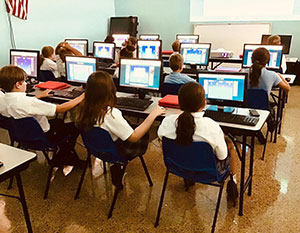 4.1. Ensure that instruction is aligned with state and national standards while promoting higher order thinking skills so that students are high school ready.
4.2. Utilize holistic, data-driven instruction to effectively teach students at their current instructional level (e.g., grouping students, rotating students, etc.). Monitor students progress utilizing a variety of data points and instructional strategies to improve learning outcomes.
4.3. Protect instructional time with a focus on by minimizing interruptions and rotating core content areas around pull-outs (e.g., band) and Masses.
4.4. Provide additional support for students through after school tutoring by teachers and/or qualified volunteers.
4.5. Implement Google Suite, with an emphasis on Google Classroom, across the curriculum. Strive for Google Educator Level 1 certifications for all teachers.
4.6. Dedicate a monthly or quarterly faculty meeting for cross-curricular sharing and conversations on data-driven instruction.
4.7. Vertical team within the school and with St. Michael Catholic High School teachers to provide seamless transitions of all academic coursework.
4.1. Ensure that instruction is aligned with state and national standards while promoting higher order thinking skills so that students are high school ready.
4.2. Utilize holistic, data-driven instruction to effectively teach students at their current instructional level (e.g., grouping students, rotating students, etc.). Monitor students progress utilizing a variety of data points and instructional strategies to improve learning outcomes.
4.3. Protect instructional time with a focus on by minimizing interruptions and rotating core content areas around pull-outs (e.g., band) and Masses.
4.4. Provide additional support for students through after school tutoring by teachers and/or qualified volunteers.
4.5. Implement Google Suite, with an emphasis on Google Classroom, across the curriculum. Strive for Google Educator Level 1 certifications for all teachers.
4.6. Dedicate a monthly or quarterly faculty meeting for cross-curricular sharing and conversations on data-driven instruction.
4.7. Vertical team within the school and with St. Michael Catholic High School teachers to provide seamless transitions of all academic coursework.Goal 5
Foster an engaging student-centered learning environment.
 5.1. Focus on building 21st century skills across the curriculum: collaboration, communication, critical-thinking (analysis and problem-solving), and creativity.
5.2. Institute collaborative, inquiry and project-based learning strategies throughout all grade levels.
5.3. Enlist student input regarding elective class offerings in order to help develop more enticing and relevant courses, such as Genius Hour (passion projects), life skills, and leadership development.
5.4. Develop a middle school schedule and other unique routines to differentiate the experience and meet their developmental needs. Establish middle school privileges with student input. 5.5. Explore best practice student-centered learning collaboratively as a faculty to improve student engagement. Share ideas for instructional strategies and report back on implementation.
5.6. Conduct school-wide, community/team building and cross-curricular activities, such as St. Benedict Day, German culture exchange (pen pals), house system, summer enrichment trip.
5.7. Invite guest speakers to help students make real world career connections to areas of study.
5.1. Focus on building 21st century skills across the curriculum: collaboration, communication, critical-thinking (analysis and problem-solving), and creativity.
5.2. Institute collaborative, inquiry and project-based learning strategies throughout all grade levels.
5.3. Enlist student input regarding elective class offerings in order to help develop more enticing and relevant courses, such as Genius Hour (passion projects), life skills, and leadership development.
5.4. Develop a middle school schedule and other unique routines to differentiate the experience and meet their developmental needs. Establish middle school privileges with student input. 5.5. Explore best practice student-centered learning collaboratively as a faculty to improve student engagement. Share ideas for instructional strategies and report back on implementation.
5.6. Conduct school-wide, community/team building and cross-curricular activities, such as St. Benedict Day, German culture exchange (pen pals), house system, summer enrichment trip.
5.7. Invite guest speakers to help students make real world career connections to areas of study.Goal 6
Support parent engagement with classroom activities and their child’s learning progress.
6.1. Each teacher will provide a beginning of the year parent orientation (both face-to-face and virtual) to discuss the teacher’s methods, expectations, communication, grade level objectives, and ways the parents can support their child’s learning throughout the school year.
6.2. Streamline home-school communications, utilizing one electronic platform for school-wide announcements, reminders, requests, grades, class assignments, etc.
6.3. Ensure an open line of communication with families by implementing a regular principal and teacher “check in” to discuss each student’s progress, successes, and areas of potential growth (principal once a semester / teacher once a quarter).
6.4. Identify strategies to help parents better understand their child’s performance on standardized test and classroom assessment data so they can effectively support their child’s learning.
SBCS will expand student and parental involvement in extracurricular activities to foster a sense of school community and to promote the school in the community.
Goal 7
Increase student engagement and excitement about our extracurricular activities, especially service and ministry involvement in our Catholic community.
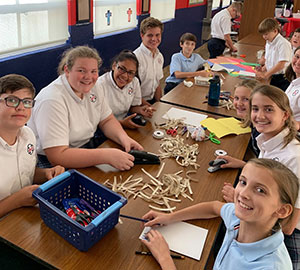 7.1. Implement a required student service hour program, encourage involvement in our current service based clubs, and provide field trip opportunities centered around service. Classes could focus on a quarterly service project under teacher supervision, perhaps integrating the activity into a subject area unit.
7.2. Recruit a parent volunteer coordinator to identify service opportunities for students at school, in the parishes, and in the community and facilitate student participation individually, as a class, or with families.
7.3. Solicit student input (e.g., town hall, class discussion, survey) on options for clubs, sports, service activities and other extracurricular opportunities.
7.4. Form an Extracurricular Committee of students, parents, faculty and volunteers to help develop and sustain extracurricular activities.
7.5. Begin a student-led newspaper or blog to inform and inspire more student, parent, parish, and community involvement.
7.6. Advertise summer programs and athletic teams to the youth in feeder parishes.
7.7. Offer fundraising opportunities for student clubs, sports and other extracurriculars, e.g., selling popcorn, frozen drinks, etc.
7.1. Implement a required student service hour program, encourage involvement in our current service based clubs, and provide field trip opportunities centered around service. Classes could focus on a quarterly service project under teacher supervision, perhaps integrating the activity into a subject area unit.
7.2. Recruit a parent volunteer coordinator to identify service opportunities for students at school, in the parishes, and in the community and facilitate student participation individually, as a class, or with families.
7.3. Solicit student input (e.g., town hall, class discussion, survey) on options for clubs, sports, service activities and other extracurricular opportunities.
7.4. Form an Extracurricular Committee of students, parents, faculty and volunteers to help develop and sustain extracurricular activities.
7.5. Begin a student-led newspaper or blog to inform and inspire more student, parent, parish, and community involvement.
7.6. Advertise summer programs and athletic teams to the youth in feeder parishes.
7.7. Offer fundraising opportunities for student clubs, sports and other extracurriculars, e.g., selling popcorn, frozen drinks, etc.Goal 8
Enlist more volunteers (parents, grandparents, parishioners, alumni) to assist with extracurricular activities and to encourage student participation.
8.1. Educate volunteers regarding the importance of mandatory CAPPS and insurance coverages necessary to volunteer and provide more frequent and convenient training. Ensure a staff member is equipped to verify those who are CAPPS trained.
8.2. Advertise volunteer opportunities for parents, alumni, and parishioners in a timely fashion.
8.3. Organize, plan, and clarify roles/directions for volunteers using strong leadership and delegation. Be sure to welcome them upon arrival and follow up with a thank you card.
8.4. Utilize a single method for volunteer signups for all functions.
8.5. Invite parents to participate and support school various activities through a stewardship approach to contribute time, treasure, and talent.
8.6. Invite retirees from all parishes to volunteer to share their knowledge and skill sets.
SBCS will improve the awareness of the school in the community and increase enrollment.
Goal 9
Maximize marketing efforts and gain more exposure in the community to increase enrollment.
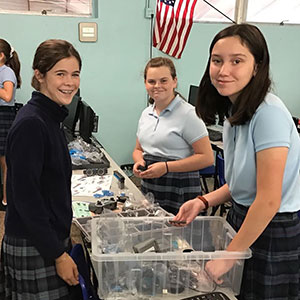 9.1. Establish a compelling branding strategy that is consistently utilized across all media to include student yard signage, Elberta directional signage, & updated website.
9.2. Generate a grassroots marketing campaign that incorporates various avenues (media, social media, video, web, direct mail) to reach our target market – to include a powerful, compelling messaging campaign. Effectively promote the special features and attributes of SBCS to potential families (e.g., values, successful alumni, etc.).
9.3. Implement a strong networking campaign with an emphasis on the local community and churches both Catholic and non-Catholic.
○ Form relationships with non-Catholic churches to market “Christian values/education”; e.g. leave brochures, visit with families with school-age children, host a pastor breakfast ○ Identify and engage local feeder patterns that could drive enrollment (daycare centers, local churches, mom groups, etc.)
○ Become active with local chambers and community organizations.
○ Engage the Hispanic/Latino community and draw them into the life of the school ○ Remind priests to promote SBCS from the pulpit as well as with CCD families.
○ Offer shadow days to prospective students in grades 5-8.
○ Give an annual honorary degree or alumni recognition at the 8th graduation to express gratitude to a community member who made an impact at SBCS.
9.4. Develop an ambassador program with a comprehensive focus on parents, students, and alumni to help with networking in local parishes, engaging prospective parents, welcoming new families, etc.
9.1. Establish a compelling branding strategy that is consistently utilized across all media to include student yard signage, Elberta directional signage, & updated website.
9.2. Generate a grassroots marketing campaign that incorporates various avenues (media, social media, video, web, direct mail) to reach our target market – to include a powerful, compelling messaging campaign. Effectively promote the special features and attributes of SBCS to potential families (e.g., values, successful alumni, etc.).
9.3. Implement a strong networking campaign with an emphasis on the local community and churches both Catholic and non-Catholic.
○ Form relationships with non-Catholic churches to market “Christian values/education”; e.g. leave brochures, visit with families with school-age children, host a pastor breakfast ○ Identify and engage local feeder patterns that could drive enrollment (daycare centers, local churches, mom groups, etc.)
○ Become active with local chambers and community organizations.
○ Engage the Hispanic/Latino community and draw them into the life of the school ○ Remind priests to promote SBCS from the pulpit as well as with CCD families.
○ Offer shadow days to prospective students in grades 5-8.
○ Give an annual honorary degree or alumni recognition at the 8th graduation to express gratitude to a community member who made an impact at SBCS.
9.4. Develop an ambassador program with a comprehensive focus on parents, students, and alumni to help with networking in local parishes, engaging prospective parents, welcoming new families, etc. Goal 10
Ensure sustainable, long-term revenue sources.
10.1. Invite SCBS stakeholders to support the Academics + Scholarship (Alabama Opportunity Scholarship Program) through the state tax credit program and to donate to the Catholic Foundation.
10.2. Develop planned giving materials to inform parishioners, alumni (including former students), and snowbirds on how to leave a bequest or to donate real estate in their wills.
10.3. Establish a corporate engagement committee (consisting of SBCS alumni and parent business owners) to maximize corporate sponsors.
10.4. Enlist companies and individuals to fund scholarships (including angel scholarships to support students all the way through SBCS), professional development, a classroom, a textbook series, a technology drive, an academic initiative, and/or an innovative
extracurricular club. Create an event to thank those companies and individuals.
10.5. Invest in state-of-the-art software to support annual and/or monthly online giving and matching gifts.
10.6. Engage all alumni/friends of SBCS in the annual fund through direct and/or electronic mail.
10.7. Invite service-oriented community groups and parish organizations (Men’s Club, Ladies Group, Knights of Columbus, Rotary Clubs, Optimist Club, snowbird groups, etc.) to the school and enlist their support.
10.8. Maximize utilization of county, state, and federal programs to support preschool enrollment, special education, professional development, English language learning, and academic initiatives.
10.9. Hire a full time advancement director (as funding allows).
10.10. Recruit a grant writer to identify and apply for grants through local, regional, and national foundations.
Goal 11
Engage all stakeholder groups in celebrating SBCS’s Centennial Year.
11.1. Assemble a Centennial Committee to oversee a yearlong, multi-faceted Centennial celebration.
11.2. Devise a publicity campaign to include Centennial branding, general communications, alumni engagement, news media management, social media, print materials, t-shirts, etc.
11.3. Hold opening and closing Centennial liturgies and receptions to engage stakeholder groups with special involvement by pastors of supporting parishes, Archbishop, Abbot of St. Bernard Monastery, Prioress of Sacred Heart Convent, and principals from across the Archdiocese.
11.4. Host two major social gatherings: a casual family picnic and a formal Gala.
11.5. Engage the campus community (students, parents, faculty) in special Centennial projects. 11.6. Develop a robust Centennial Fund initiative with the goal of raising $500,000. Display the names of Centennial sponsors in a permanent manner on campus.
Goal 12
Foster a lifelong, meaningful relationship with SBCS alumni and former students.
 12.1. Promote the SBCS Alumni and Friends Association and form a committee of decade and class representatives to initiate and sustain alumni engagement.
12.2. Develop and maintain a database of anyone who attended SBCS over the past 5 decades. 12.3. Maintain ongoing communication with all alumni through social media, electronic mail, and direct mail (if feasible). Send a Christmas card, annual report, and annual fund requests.
12.4. Highlight recent graduates in the principal’s ongoing newsletter.
12.5. Establish an Alumni Hall of Fame to recognize former students for their faith, service, and leadership. Develop a SBCS pin to recognize this special designation.
12.6. Develop an annual report to showcase SBCS successes, share vision, present new initiates, and recognize supporters.
12.7. Coordinate a casual annual alumni homecoming event focused on decade reunions.
12.1. Promote the SBCS Alumni and Friends Association and form a committee of decade and class representatives to initiate and sustain alumni engagement.
12.2. Develop and maintain a database of anyone who attended SBCS over the past 5 decades. 12.3. Maintain ongoing communication with all alumni through social media, electronic mail, and direct mail (if feasible). Send a Christmas card, annual report, and annual fund requests.
12.4. Highlight recent graduates in the principal’s ongoing newsletter.
12.5. Establish an Alumni Hall of Fame to recognize former students for their faith, service, and leadership. Develop a SBCS pin to recognize this special designation.
12.6. Develop an annual report to showcase SBCS successes, share vision, present new initiates, and recognize supporters.
12.7. Coordinate a casual annual alumni homecoming event focused on decade reunions.SBCS will plan for current and future facility needs for safety, maintenance, renovation, compliance, and expansion.
Goal 13
Enhance the safety, security, and aesthetic appearance of the school.
13.1. Develop and implement a plan to increase the curb appeal for the front of the school.
13.2. Create an enclosed well-lit lobby between the existing office and old library by installing double doors. Install a security door within the newly defined lobby, requiring visitors to be screened prior to gaining access to the school’s interior.
13.3. Enhance the security of all gated access points on campus.
13.4. Define the outdoor space for sports and outdoor activities and restore these defined areas by leveling the ground, installing irrigation and new sod.
13.5. Upgrade outdoor play areas and equipment, e.g., playground, basketball area, soccer goals, etc.
13.6. Improve signage directing visitors to the entrance and administrative offices.
13.7. Define parking areas for visitors at the front of the school and for faculty on the north side.
13.8. Install School Zone signage and road striping or a speed bump in front of the school.
13.9. Replace current closed circuit security system with wireless cameras that allow file sharing.
13.10. Install powder coated galvanized steel picket fencing around the perimeter.
13.11. Paint or panel the ceiling and enhance the lighting of breezeways.
13.12. Enclose breezeways (fully or partially) especially between the gym and first classroom.
Goal 14
Optimize, modernize, and make classroom spaces more accessible within the existing structures.
14.1. Consult with teachers and staff to audit space and technology needs.
14.2. Increase the number of picnic tables for both middle school and intermediate areas and add an outdoor eating pavilion.
14.3. Conduct an ADA assessment of the school facilities, identify and consider feasible changes. 14.4. Provide flexible seating options for the classrooms.
14.5. Upgrade electrical wiring throughout classrooms and replace fluorescent with LED lighting. 14.6. Install new blinds in each classroom.
Goal 15
Develop a routine maintenance plan for facilities and provide for its ongoing implementation.
 15.1. Establish health and safety maintenance practices that aligns with CDC recommendations, Alabama Department of Public Health, and school-related best practices.
15.2. Form a facilities committee to meet quarterly to plan facility and grounds improvement.
15.3. Develop a standard schedule (tasks and time frames) for the routine cleaning of the facility, seasonal tasks, and preparation for inclement weather.
15.4. Implement a process to identify and prioritize minor and major maintenance issues to ensure that they are addressed and that their resolution is documented.
15.5. Review the current lawn care plan. Establish a schedule for lawn care and landscape projects that will include the replenishment of approved surfaces under the playground equipment.
15.1. Establish health and safety maintenance practices that aligns with CDC recommendations, Alabama Department of Public Health, and school-related best practices.
15.2. Form a facilities committee to meet quarterly to plan facility and grounds improvement.
15.3. Develop a standard schedule (tasks and time frames) for the routine cleaning of the facility, seasonal tasks, and preparation for inclement weather.
15.4. Implement a process to identify and prioritize minor and major maintenance issues to ensure that they are addressed and that their resolution is documented.
15.5. Review the current lawn care plan. Establish a schedule for lawn care and landscape projects that will include the replenishment of approved surfaces under the playground equipment.Goal 16
Plan for future facilities to accommodate potential growth and the needs of future generations.
16.1. Establish criteria to set into motion the planning stages for a possible new school facility.
16.2. Identify the specific needs of a new school and develop a study to plan for cost estimates, location, design, funding, acquisitions, and construction.
